Leap into Adventure at Mayflower Bocawina National Park
Did you know Belize is home to an incredible one hundred and three protected areas? That’s right, everything from lush forest reserves to stunning marine parks and national treasures. These spaces are beautiful, and they’re also essential for preserving the rich biodiversity that makes Belize so unique. One of these gems is the Mayflower Bocawina National Park, tucked away in the heart of the Stann Creek District. Picture this, over seven thousand acres of tropical rainforest, cascading waterfalls, and even ancient Mayan temples waiting to be explored. This week on Belize on Reel, we’re heading south to uncover the wonders of this protected paradise and meet some of the wildlife that call it home. Here’s News Five’s Britney Gordon with the story.
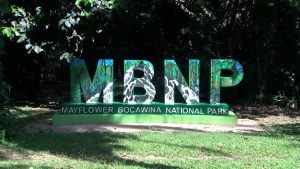 Britney Gordon, Reporting
Britney Gordon, Reporting
“Take only pictures and leave only footprints.” That’s the guiding principle at Mayflower Bocawina National Park, and the top rule for anyone visiting. For nature lovers, it’s an easy one to stick to. The park is home to seven breathtaking waterfalls, and which one you choose to explore really depends on how adventurous you are and just how much you enjoy hiking. Park ranger Dolores Sho tells us about the park’s most popular trail.”

Dolores Sho
Dolores Sho, Park Ranger
“The antelope waterfall, which is a forty-five minute hike, that’s the most popular waterfall within the National Park due to the viewpoint and the natural swimming pool. The viewpoint is whereby you can actually see a portion of the Caribbean Sea and north of Hopkins Village. Right above the viewpoint is whereby the natural swimming pool is at fourteen to fourteen feet deep. So after a long hike, you get to refresh yourself.”
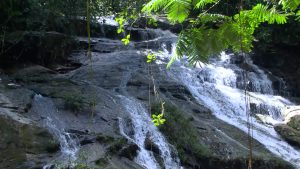 This seven-thousand-acre park is co-managed by a local community-based organization, with support from the Association of Protected Areas Management Organizations (APAMO) and the Protected Areas Conservation Trust (PACT), which provide critical funding to keep it thriving. It is home to jaguars, tapirs and toucans – all animals treasured in Belize. Darren Budna, another park ranger, explains how his work contributes to the preservation of the natural resources of the Freshwater Creek and North Stone Creek Watersheds of Belize.
This seven-thousand-acre park is co-managed by a local community-based organization, with support from the Association of Protected Areas Management Organizations (APAMO) and the Protected Areas Conservation Trust (PACT), which provide critical funding to keep it thriving. It is home to jaguars, tapirs and toucans – all animals treasured in Belize. Darren Budna, another park ranger, explains how his work contributes to the preservation of the natural resources of the Freshwater Creek and North Stone Creek Watersheds of Belize.
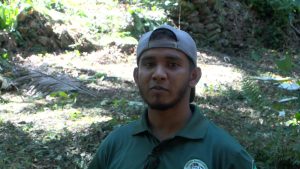
Darren Budna
Darren Budna, Park Ranger
“So seeing all of that is we try to protect everything, not just about wildlife, but for the future generation of our country and the entire world. The National Park is not just for Belizean, it’s for anyone who wants to visit. You guys are welcome anytime, right? It’s very easy. We usually just do a simple park entrance fee , two dollars for Belizean and for non-Belizean, ten BZ. You come out here. National Park is not just about visiting waterfalls. It’s like a natural therapy.”

Roman Guzman
Britney Gordon
“This is the intersection of the antelope and the Ramon Waterfall trails. The Antelope, which is the most popular waterfall trail on the grounds, is around a thousand feet and boasts one of the most popular swimming pools in the area. Meanwhile, the Ramon Trail is one of the least visited trails. Meaning that you’re more likely to run into wildlife while on it. It was named after Roman Guzman, a park ranger that had been working here his entire life.”
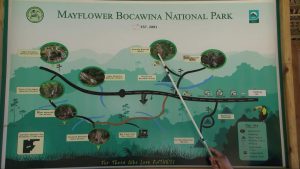 The park was established back in 2001, after a team of archeologists studied the area. Aside from the beautiful flora and fauna, there is a wealth of Mayan artifacts that have been found by researchers.
The park was established back in 2001, after a team of archeologists studied the area. Aside from the beautiful flora and fauna, there is a wealth of Mayan artifacts that have been found by researchers.
Darren Budna
“I have what the Mayan would say is a spearhead, which was also fun within this area. So the Mayan used this flint stone to create these unique shape of spearheads, and they would use these for hunting wilder huger wildlife animals within the area.”
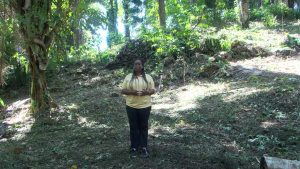
Britney Gordon
Britney Gordon
“The Mayflower Bocawina National Park was inhabited by the Mayan communities between eight and nine hundred AD. Right now, I’m standing on the Maintzunun and Mayan mound where a portion of the wall is visible. This is one of eleven unexcavated Mayan temples on the grounds. Before Mayflower Bocawina became a protected area, it was a logging site, where steam hoists would transport lumbar from the top of the hills to lower land. Although that practice has long been discontinued, park rangers remain vigilant, keeping a close watch for any signs of illegal logging. It is one of many ways rangers ensure that life within the park continues to thrive so that Belizeans can admire the beauty of their country for generations to come.”
Britney Gordon for News Five.






Facebook Comments